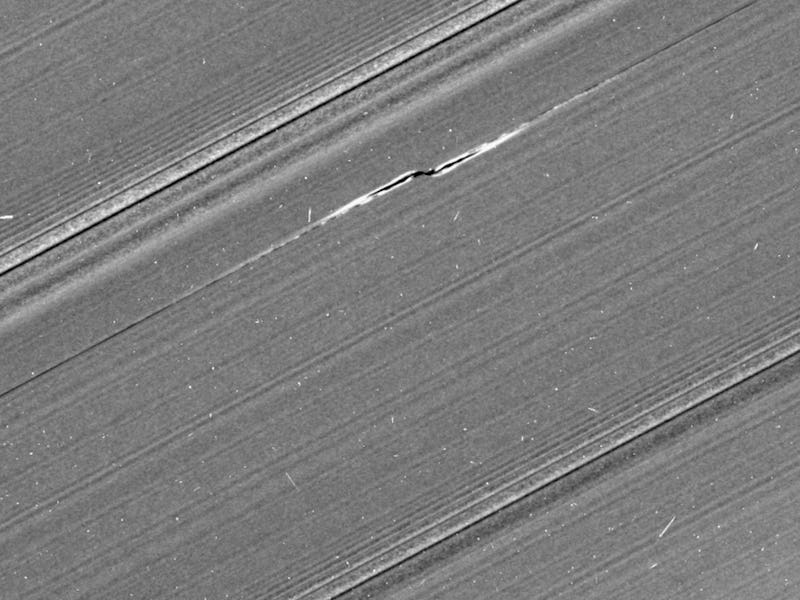Cassini Spends Its Final Days Hunting for Tiny Moons in Saturn's Rings
So far, the moons have eluded scientists.

In about 40 days, the Cassini spacecraft plunges to its death inside Saturn’s vicious atmosphere. But before its final descent, Cassini will hunt for tiny moons that NASA suspects are hidden amid the planet’s vast, iconic rings.
The spacecraft’s next orbit, its 287th, begins on August 4, and it will pass one of the curious gashes in Saturn’s famous disk. NASA scientists first spotted the anomalies in 2004, and they assumed football field-sized moons were responsible for creating the three-mile long slashes. In the images, however, they couldn’t find evidence of any such diminutive space rocks. A close flyby in the coming week may reveal these supposed moonlets.
Scientists call these gashes “propellers.” As you can see in the photo above, the gashes are a bit crooked, like a plane’s propellers. When first analyzing the images thirteen years ago, Cassini researchers concluded that the propeller gashes “are much like the wave pattern that trails after a speedboat as it skims across a smooth lake.” Yet, Saturn’s rings are like no smooth lake. They’re much more varied and uneven, like a “choppy sea,” which would make the propellers difficult to find.
If these moonlets do exist, they are tiny, nothing like the large moons beyond Saturn’s risk. During orbit 287, Cassini will have a chance to further investigate the clouds and surface of Titan, the planet’s largest moon. The moon contains a dense nitrogen atmosphere with wispy methane clouds. It’s the only known world outside our own that contains bodies of liquid — although its lakes are composed of methane. Cassini will also study Saturn’s northern aurora. Much like Earth’s auroras, these are extravagant light shows caused by energetic particles from the sun slamming into Saturn’s upper atmosphere.
After orbit 287, Cassini will have just six missions left. It will drop into Saturn’s heavy atmosphere on September 15, destroying any evidence of having spent years orbiting the planet and its many moons.